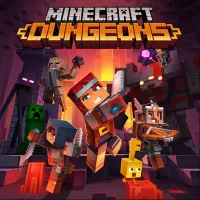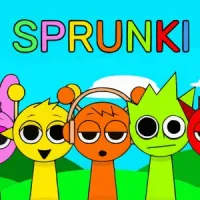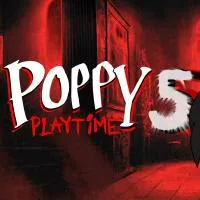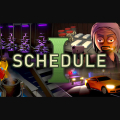
Bad Parenting
Bad Parenting
When I first booted up Bad Parenting 1: Mr. Red Face, I was swept into a whirlwind of unpredictability and irreverence. I had heard whispers on various forums about the game’s offbeat sense of humor and surreal storyline, and I felt both amused and apprehensive before diving in. From the very first screen, I was struck by the unusual premise. The game places you in such a peculiar position that every decision and interaction feels as if it carries weight—even if that weight is delivered with a tongue-in-cheek air of parody. My experience began with a strong sense of anticipation, and as I navigated through the initial setup, I noticed that the developers had poured layers of unconventional narratives into what might seem like a normally mundane environment.
Initial Impressions and Setup Rituals
The initial setup of Bad Parenting 1: Mr. Red Face was an experience in itself. I found myself marveling at the creative approach taken for a game that revolves around parenting themes approached from a humorous and satirical perspective. The loading screens and introductory sequences were artfully designed, combining minimalist visuals with exuberant hint drops about the narrative style. As I configured my controls and adjusted graphical preferences, I was both amused and impressed by the fine-tuning options, which allowed me to tailor the experience to my liking. I remember spending a few extra minutes in the configuration settings just to explore the subtle details—the sliding panels, the quirky fonts, and the oddly familiar color scheme that both comforted and intrigued me.
Exploring Uncommon Narrative Threads
The narrative of Bad Parenting 1: Mr. Red Face is anything but conventional. I found myself immersed in a story that unravels through a series of unexpected twists and humorous character interactions—all presented through a perspective riddled with irony and raw honesty. The story does not center around traditional parenting escapades; instead, it paints a vivid picture of interpersonal misunderstandings, abstract relationships, and surreal family dynamics. As I progressed, the dialogue would occasionally break the fourth wall, making me feel like a participant in an inside joke rather than a passive observer. The protagonist’s quirky personality and the peculiar challenges they face resonated with my love for storytelling that thrives on unpredictability.
Humor and Quirk in Gameplay
What struck me most about the gameplay in Bad Parenting 1: Mr. Red Face is its relentless commitment to humor and whimsy. Each level, challenge, and mini-game is infused with a dry humor that sometimes borders on the absurd, yet it never feels forced. I was constantly entertained by the satirical commentary woven into the mechanics of the game. Whether it was the irony in the tasks you were required to complete or the absurd situations you were thrown into, I felt that the developers had a deep understanding of modern satire and the art of playful exaggeration. I found myself laughing at the ludicrous tasks and the exaggerated emotional reactions of the characters, which made the overall experience not only entertaining but also refreshingly original.
Interface and Control Nuances
From a functional standpoint, the interface in Bad Parenting 1: Mr. Red Face is a fine example of how to blend usability with artistic expression. I appreciated the attention given to even the most minute details; every button and control seemed to have been tested for both practicality and aesthetic appeal. The interface was remarkably user-friendly, which let me dive into the game without being hindered by clunky controls. The controls provided a tactile satisfaction that complemented the quirky events unfolding on screen. My personal experience was marked by moments where the interface would suggest hints or subtle nods to the next course of action. These elements demonstrated that the developers cared deeply about the balance between accessibility and innovation, ensuring that even first-time players could feel at home in this bizarre digital landscape.
Visual Design and Aesthetic Expression
The artistic direction of Bad Parenting 1: Mr. Red Face is one of its most compelling aspects. I was immediately drawn into a world where colors, shapes, and perspectives challenge everyday expectations. The visuals are a delightful mix of cartoonish charm and exaggerated realism, capturing the essence of both childhood innocence and adult absurdity. Every scene felt carefully curated to evoke a sense of both nostalgia and disruption. I was particularly taken by the detailed character models and the background environments, which often featured intricate designs that seemed to tell stories on their own. Whether it was the playful palette of the day-to-day settings or the stark contrast of more dramatic scenes, the aesthetic choices resonated with me and reinforced the game’s overall theme of unconventional parenting.
Auditory Atmosphere and Sound Design
The sound design in this game is a masterclass in creating an engaging auditory atmosphere. As I navigated the quirky storyline, I found that every sound effect and musical cue was carefully chosen to reinforce the game’s satirical spirit. The background score, at times whimsical and at other moments unsettlingly intense, perfectly complemented the shifting tonalities of the narrative. I became quite attuned to the audio cues that signaled plot twists or signified humorous irony—each sound was like a well-timed punchline in the symphony of gameplay. The character voices, slickly recorded and delivered with a mix of sincerity and mock gravity, added another layer of depth. It was clear that considerable thought had been invested in ensuring that the auditory experiences not only supported but elevated the overall storytelling, drawing me deeper into the eclectic world of Mr. Red Face.
Engagement with Game Mechanics
The game mechanics in Bad Parenting 1: Mr. Red Face are as unconventional as they are engaging. I was impressed by how the developers managed to blend traditional elements with offbeat challenges that require both wit and reflexes. Instead of following a linear path, the gameplay offered me a dynamic environment in which every decision could lead to a radically different scenario. I found this approach incredibly refreshing; it pushed me to think creatively about each move. There were moments where I had to carefully navigate through a series of comic misadventures, using my intuition to decide the best course of action. The challenge was not merely about overcoming obstacles, but also about embracing the unpredictability of the narrative and enjoying the journey regardless of the outcome.
In-game Challenges and Adaptive Strategies
As I progressed further into the game, I faced a myriad of obstacles that compelled me to explore innovative approaches. Unlike conventional games that rely on set patterns, Bad Parenting 1: Mr. Red Face forced me to continuously adapt to its eccentric logic. I clearly remember moments when I had to quickly pivot my strategy, readjusting my approach in response to the ever-shifting dynamics of the game. One of the aspects I appreciated was how these challenges were interwoven with humorous narrative elements. This blend of wit and difficulty made each success feel like a personal victory. I was frequently surprised by inventive puzzles and contradictory tasks that kept me fully engaged. This level of interaction made every session unique, as I learned to trust my instincts while simultaneously seeking out the subtle cues hidden within the gameplay mechanics.
The Social Dynamics and Character Interactions
One of the aspects that deeply resonated with me in Bad Parenting 1: Mr. Red Face were the interactions between characters. The game world is populated by a host of memorable personalities, each with their own quirks and hidden depths. I enjoyed engaging in conversations that ranged from the hilariously absurd to the surprisingly insightful. Every interaction felt layered with subtext, and I often found myself laughing at the exaggerated expressions and responses that defined each character. This unique treatment of character dynamics added a level of relatability amidst the surreal backdrop of the game. I wasn’t merely playing a game—I was swept up in an elaborate, quirky saga where each exchange cracked open a piece of a vast, masterfully crafted story.
Depth in Storytelling and Narrative Fluidity
The storytelling in Bad Parenting 1: Mr. Red Face is both daring and artfully executed. I was drawn into a narrative that eschewed traditional moral lessons in favor of a more ambiguous, yet deeply engaging, tale of human connection and absurdity. The game handled themes of responsibility, misunderstanding, and familial dynamics in a way that was neither preachy nor overly simplistic. Throughout my playthrough, I experienced a rich tapestry of moments that explored the consequences of unconventional choices. The non-linear storyline allowed me to explore various facets of the game world at my own pace, and the occasional narrative asides provided unique insights into the mechanics of parenting as interpreted by the game’s creator. This narrative fluidity kept me invested in the storyline and invited me to contemplate the blurred lines between humor and real-life challenges.
Personal Moments of Revelation
During my time with Bad Parenting 1: Mr. Red Face, I encountered several moments that prompted introspection amid the hilarity. As I navigated the unconventional challenges and engaged with the game’s multifaceted characters, I found myself reflecting on my own experiences of responsibility and the chaos that sometimes accompanies everyday life. There were scenes that, while seemingly absurd, echoed sentiments of regret, hope, and unspoken love. I found that the game succeeded in using humor as a tool for deeper exploration of human emotions and relationships. At times, as I sat back and allowed the satire to settle, I experienced a genuine connection with the narrative—not as a detached commentator, but as a participant who could see shades of my own personal journey. These revelations, albeit subtle and wrapped in layers of irony, added a dimension of authenticity to the overall experience.
- Engaging humor and satire that constantly surprises and entertains
- Rich narrative filled with unexpected twists that maintain intrigue
- Unique artistic style blending surreal visuals with playful design
- In-depth character interactions that add complexity to the overall experience
- Adaptive gameplay mechanics that encourage creative problem-solving
- Thoughtfully integrated audio elements that enhance the immersive atmosphere
- A steep learning curve due to its unconventional control system
- Inconsistent pacing in narrative segments that may confuse some players
- Occasional technical glitches that disrupt smooth gameplay









